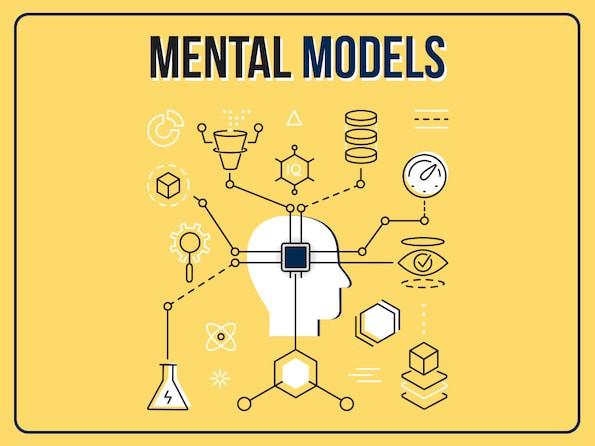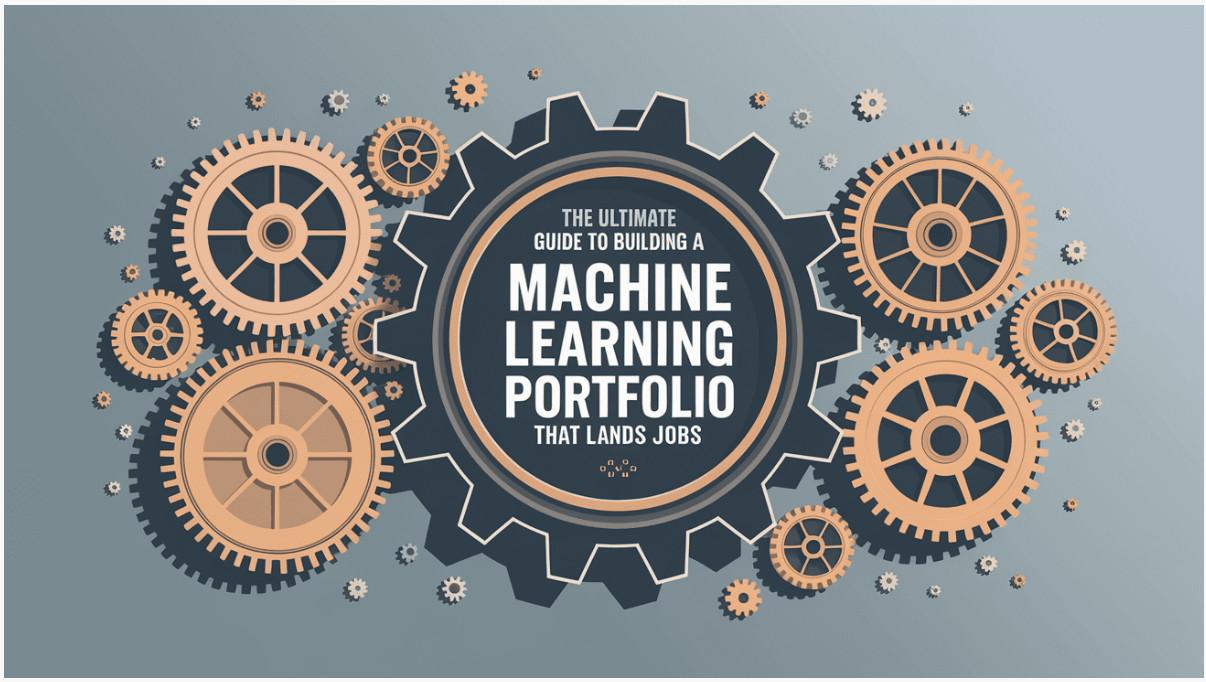Section 1: Introduction - Why ML Take-Home Assignments Are the Real Test of Practical Skill
Machine Learning (ML) interviews are evolving faster than ever, and nowhere is that shift more visible than in take-home assignments.
For years, the ML hiring process was dominated by algorithm puzzles, quick coding rounds, and whiteboard theory. But in 2025, the game has changed. Companies like Google, Netflix, OpenAI, and Anthropic are placing greater emphasis on take-home ML challenges that simulate the real work engineers actually do.
These assignments aren’t about recalling syntax, they’re about demonstrating how you think, structure, and deliver real-world ML solutions.
In essence, take-home assignments are the new portfolio.
They show hiring teams how you handle ambiguity, communicate insights, and deliver production-level reasoning under realistic time constraints. And for candidates, they’re an opportunity to demonstrate something that algorithmic tests rarely reveal, depth.
Why Take-Home Assignments Matter More Than Ever
Here’s why top tech companies are increasingly using take-home ML tasks as a core part of their hiring loop:
- They test real engineering maturity.
Instead of forcing you to recall binary tree rotations, take-home challenges let you show how you think through the ML lifecycle, from data exploration to model validation and deployment strategy. - They reduce interview anxiety.
You’re not being judged on live performance under pressure. You have time to build, reason, and refine, closer to how real ML work happens. - They reflect job reality.
ML engineers spend 80% of their time working with data, debugging pipelines, and interpreting business needs, not solving riddles. Take-home assignments test exactly that. - They reward creativity and communication.
Interviewers want to see not just if you can build a model, but how you frame the problem, justify trade-offs, and tell a compelling story with data.
What ML Take-Home Assignments Usually Look Like
Most take-home ML challenges fall into one of three categories:
- Data Exploration + Modeling Tasks
You’ll receive a dataset and be asked to perform analysis, feature engineering, and build a baseline model. Example:
“Predict customer churn using the attached CSV dataset. Provide EDA, modeling steps, and metrics explaining your approach.”
- End-to-End Mini Projects
These simulate production pipelines. You might need to preprocess data, train a model, create evaluation scripts, and possibly containerize the solution. - Open-Ended Problem Statements
These test product thinking. Example:
“Design a recommendation system for an e-commerce platform using public data. How would you measure its success?”
The last category is increasingly popular because it mirrors how teams like those at Meta or Netflix operate, data-rich, goal-driven, and full of ambiguity.
The Big Challenge: Balancing Depth and Brevity
A take-home assignment isn’t a Kaggle competition. You don’t have unlimited time or resources.
The trap many candidates fall into is over-engineering.
They build complex pipelines when a simple, well-documented model with strong reasoning would score higher.
Your goal should be to demonstrate:
- Clarity of reasoning over code quantity.
- Sound methodology over model complexity.
- Interpretability over black-box performance.
In short: be strategic, not exhaustive.
What Interviewers Actually Evaluate
When ML engineers at companies like Google or Anthropic review submissions, they typically grade across five dimensions:
- Problem Understanding – Did you clearly define the objective and metrics?
- Data Exploration & Feature Reasoning – Did you uncover useful insights?
- Modeling Approach – Did you justify your design choices?
- Evaluation – Are metrics well chosen and interpreted?
- Communication – Is your notebook, report, or README clear, concise, and reproducible?
A polished, well-reasoned notebook that others can easily follow can often beat a technically superior one that’s hard to interpret.
The Advantage for Candidates Who Prepare Well
Here’s the exciting part:
While most engineers dread take-home assignments, those who know how to approach them strategically can easily stand out.
Because unlike timed coding rounds, where everyone looks similar, take-home projects let you express your unique engineering voice.
You can:
- Show your curiosity through exploratory data analysis (EDA)
- Demonstrate cross-functional awareness by aligning your solution with user or business metrics
- Communicate like a leader through structured reporting
As discussed in Interview Node’s guide “Mock Interview Framework: How to Practice Like You’re Already in the Room”, simulation-style preparation builds muscle memory for exactly this, working through open-ended prompts calmly and confidently.
Section 2: Common Types of ML Take-Home Assignments (and What They Test)
ML take-home assignments come in many flavors, from simple predictive tasks to open-ended product simulations. Each one is designed to reveal how you think, not just what you know.
While the specific format varies from company to company, most challenges fall into five broad categories. Understanding these types, and what interviewers are really testing, is the key to mastering them.
a. Data Exploration and Baseline Modeling
This is the most common take-home format, especially for entry- to mid-level ML roles.
You’ll typically receive a CSV file or access to an API with structured data, and you’ll be asked to perform end-to-end analysis, from EDA (exploratory data analysis) to building a baseline predictive model.
Example Prompt:
“Build a model that predicts whether a customer will churn based on the provided transaction data. Provide your approach, code, and findings.”
What It Tests:
- Data cleaning and preprocessing skills
- Feature engineering creativity
- Modeling intuition (simple yet effective models)
- Metric selection and interpretation
Pro Tip:
Don’t jump straight into XGBoost or neural nets. Start with clear EDA, hypothesis-driven reasoning, and a simple logistic regression baseline.
Hiring managers often score clarity and interpretability higher than leaderboard-style performance.
b. ML System Design or Pipeline Simulation
These assignments simulate real-world ML engineering work.
You might be asked to design or partially implement a data pipeline, complete with ingestion, transformation, and deployment considerations.
Example Prompt:
“Design a data pipeline that collects streaming data, trains a model weekly, and monitors for concept drift. Provide a system diagram and pseudocode.”
What It Tests:
- Understanding of MLOps concepts (feature stores, CI/CD, drift detection)
- Awareness of scalability and maintainability
- Familiarity with cloud tools like AWS SageMaker, Vertex AI, or Kubeflow
- Communication of system trade-offs
You may not need to code the entire system, but you must show that you think like an ML engineer, not just a model builder.
As explained in Interview Node’s guide “MLOps vs. ML Engineering: What Interviewers Expect You to Know in 2025”, modern interviews now reward engineers who can bridge modeling with infrastructure reasoning.
c. Business-Oriented Case Studies
Here, the emphasis isn’t on raw model accuracy, it’s on how you connect technical decisions to business outcomes.
These assignments often come from product-driven companies like Amazon, Airbnb, or Stripe.
Example Prompt:
“You’re given anonymized user activity data. Propose a model to improve product engagement. How would you measure success?”
What It Tests:
- Problem framing and metric design
- Communication with non-technical stakeholders
- Experimentation mindset (A/B testing, causal reasoning)
- Storytelling through data
Your ability to reason about why the model matters will often outweigh how advanced it is.
Frame your report as if presenting to a product manager, concise, outcome-driven, and focused on impact.
d. Research or Model-Improvement Tasks
This type of take-home challenge is common at companies focused on applied AI or deep learning, such as Anthropic or Stability AI.
You might receive a partially implemented model and be asked to improve its performance.
Example Prompt:
“We’ve trained a text classifier on movie reviews with a baseline accuracy of 78%. Suggest improvements and demonstrate them.”
What It Tests:
- Ability to debug, analyze, and improve ML models
- Familiarity with model evaluation techniques
- Creative feature engineering or architecture tuning
- Use of explainability tools (e.g., SHAP, LIME)
This type of task measures your depth and craftsmanship, how you fine-tune existing work and justify each improvement.
e. Open-Ended Product Design
Reserved for senior candidates, this is the “CEO’s problem” style question.
You’ll be given a vague, high-level problem and asked to design an ML solution from scratch.
Example Prompt:
“Design an ML-powered feature that helps users discover relevant job postings on a career platform.”
What It Tests:
- Product and user empathy
- High-level system design
- Trade-off reasoning (data cost, latency, ethics)
- End-to-end ownership
These assignments mirror how real teams operate, where the goal isn’t just model accuracy, but delivering measurable business and user impact.
Understanding these formats will immediately make you more confident walking into an ML take-home challenge.
When you know what type of task you’re facing, you can prioritize what matters most, and avoid wasting time building unnecessary complexity.
Section 3: Real-World Examples of ML Take-Home Assignments (and What Made Them Stand Out)
One of the best ways to master take-home ML challenges is by learning from real examples, assignments that have circulated at leading tech companies and the approaches that set winning candidates apart.
While each company’s task is unique, the underlying expectations remain consistent: clarity, reasoning, structure, and measurable results.
Below are three authentic examples inspired by actual case challenges at FAANG, AI startups, and data-driven enterprises, along with commentary on what strong submissions looked like.
Example 1: Meta-Predicting User Retention on a Social Platform
Prompt:
“Given anonymized engagement data for a social media app, build a model to predict whether a user will remain active after 30 days. Include your approach, modeling rationale, and a summary of key insights.”
What It Tested:
This challenge examined both technical execution and business framing, a hallmark of Meta’s product-oriented ML interviews.
Candidates who performed well typically followed this structure:
- Problem Understanding: Defined “retention” clearly (e.g., users active for ≥5 sessions in 30 days).
- EDA: Visualized behavioral distributions, outlier activity, and correlations between engagement features and retention.
- Modeling: Started with logistic regression or gradient boosting; avoided overfitting with proper time-based validation.
- Evaluation: Used precision, recall, and calibration curves; tied metrics to real-world impact (“improving recall by 5% could re-engage 50K users”).
- Communication: Wrote a concise report summarizing findings and limitations in plain English.
Why It Stood Out:
The best candidates didn’t just chase accuracy. They tied model metrics to user engagement strategies, exactly what product ML teams want to see.
Key Lesson:
Always close your analysis with “so what?”, how your model improves experience, retention, or revenue.
Example 2: Amazon-Demand Forecasting for an E-Commerce Product
Prompt:
“Using historical sales and marketing data, forecast product demand for the next quarter. Explain your feature selection, model choice, and error analysis.”
What It Tested:
Amazon’s ML take-home assignments emphasize scalability, interpretability, and operational thinking.
They expect you to reason about pipelines, not just algorithms.
Strong submissions showed the following:
- Data Understanding: Candidates discussed missing values, seasonality, and external factors (marketing spend, holidays).
- Feature Engineering: Lag features, rolling averages, and calendar encoding.
- Modeling Choices: Started with ARIMA or Prophet baselines; advanced to gradient boosting with explainability via SHAP values.
- Evaluation: Used MAPE and RMSE, but also commented on business tolerances (e.g., overestimation may cause overstock, underestimation causes lost sales).
- Scalability Thinking: Mentioned modularizing code, retraining periodically, and monitoring drift.
Why It Stood Out:
Top-tier candidates didn’t deliver the “best” forecast, they delivered a robust and maintainable one.
They structured code like an internal repo:
- A src/ folder for logic
- A notebooks/ folder for exploration
- A README.md explaining everything
Key Lesson:
Treat your submission like production code. It signals professionalism, discipline, and real-world readiness.
As highlighted in Interview Node’s guide “The Future of ML Hiring: Why Companies Are Shifting from LeetCode to Case Studies”, these assignments are closer to mini case studies than coding tests. They evaluate your end-to-end reasoning far more than your line-by-line syntax.
Example 3: OpenAI-Improving a Text Classifier’s Performance
Prompt:
“We’ve built a sentiment classifier with 80% accuracy using logistic regression. Suggest and implement improvements while maintaining interpretability.”
What It Tested:
This type of assignment is designed for research-aware engineers, those who can innovate thoughtfully, not recklessly.
Winning submissions typically did the following:
- Diagnostic Analysis: Checked misclassified examples and dataset imbalance.
- Feature Engineering: Introduced embeddings from pre-trained LMs (e.g., BERT, Sentence Transformers).
- Model Selection: Compared linear and fine-tuned transformer models; discussed trade-offs between performance and explainability.
- Evaluation: Reported F1 and ROC-AUC, but also analyzed false positives qualitatively.
- Responsible AI Awareness: Noted bias risks (“model tends to misclassify slang from minority dialects”) and suggested data augmentation strategies.
Why It Stood Out:
The best responses framed improvement as a scientific process, not just model tuning.
Candidates wrote, “We hypothesized that contextual embeddings would improve classification of sarcasm; results confirmed a 5% lift in F1.”
Key Lesson:
Treat your take-home like a research note: define a hypothesis, test it, and reflect on results.
Common Thread Across All Three Examples
Whether at Meta, Amazon, or OpenAI, strong submissions share three patterns:
- They narrate reasoning clearly.
- They prioritize clarity over complexity.
- They communicate results like engineers who understand business.
The best candidates sound less like Kaggle competitors, and more like thoughtful professionals who could join the team tomorrow.
Section 4: How to Communicate Your Take-Home Solution During the Follow-Up Interview
Completing the take-home assignment is only half the battle, the real test comes when you have to walk an interviewer through your solution.
Think of this round as your opportunity to sell your thinking. Many ML candidates underestimate this stage and treat it like a code review, but that’s the wrong mindset. The goal here isn’t just to prove that your code works, it’s to show that you think like a collaborative, impact-driven ML engineer.
Let’s unpack exactly how to present your solution like a pro and turn this round into your biggest advantage.
a. Frame Your Presentation Like a Story
The best way to discuss your take-home project is to tell a structured, narrative-driven story.
You’re not just reciting what you did; you’re walking the interviewer through a logical progression of decisions and discoveries.
Use this simple yet powerful framework:
- Problem Understanding – Start with what you were asked to do and how you interpreted it.
- Approach – Explain the path you took and why you chose it.
- Insights – Share key observations from data exploration or analysis.
- Solution – Describe your model and evaluation method.
- Impact – Explain how your work connects to real-world outcomes.
- Next Steps – End with how you’d improve or extend it if you had more time.
This structure mirrors how real-world ML engineers present their findings to leadership, with clarity, confidence, and narrative flow.
b. Lead with Reasoning, Not Code
It’s tempting to open your notebook and dive straight into the code, don’t.
Instead, start by explaining your reasoning at a high level.
For example:
“I started by identifying what business metric we were optimizing for, in this case, retention. Based on that, I selected recall as the main evaluation metric, since missing churn-prone users is costlier than flagging false positives.”
That single line demonstrates technical depth, business awareness, and strategic thinking, all before the interviewer even sees your model.
Once you’ve established the reasoning, you can then walk through the code sections selectively, highlighting key functions, plots, or modeling steps.
c. Anticipate Follow-Up Questions
During the walkthrough, interviewers will often pause you with questions like:
- “Why did you choose this algorithm?”
- “What trade-offs did you consider?”
- “How would this scale to 10x the data?”
- “How would you deploy or monitor this model?”
The key is not to memorize answers but to anticipate intent.
Each question is really testing a dimension of your engineering maturity:
- Algorithm choice → depth of ML knowledge
- Trade-offs → analytical reasoning
- Scalability → systems thinking
- Deployment → MLOps awareness
Frame your responses to show that you can think beyond the assignment’s boundaries.
If you’re unsure, it’s perfectly fine to admit it, just add curiosity:
“That’s a great question. I’d probably start by benchmarking how the model handles streaming data, then explore options like batch inference with feature stores.”
That’s how strong candidates turn uncertainty into credibility.
d. Visuals Are Your Best Friend
Most interviewers are skimming through multiple presentations, visuals help you stand out.
Use clear, meaningful plots:
- EDA visuals to show understanding of data trends
- Confusion matrices or ROC curves to communicate performance
- Feature importance charts to demonstrate interpretability
Each visual should serve a narrative purpose, not just decoration.
You can even keep a summary slide or dashboard ready if you’re presenting via screen share. This shows initiative and readiness for real-world collaboration.
e. Demonstrate Reflection and Trade-Off Thinking
At senior ML interviews, especially in companies like Amazon, Meta, or Anthropic, your ability to reflect critically on your choices is as important as the solution itself.
Conclude your walkthrough with an honest, structured reflection:
- What worked well
- What didn’t
- What you’d improve with more time
Example:
“Given more time, I’d integrate model monitoring and test for drift since user engagement can vary seasonally. I’d also explore more interpretable gradient boosting methods for stakeholder visibility.”
This communicates humility, foresight, and systems thinking, the trifecta of ML leadership potential.
As explained in Interview Node’s guide “The Hidden Metrics: How Interviewers Evaluate ML Thinking, Not Just Code”, reflection often signals strategic maturity, which differentiates strong engineers from merely skilled ones.
Section 5: How to Practice and Improve Your Take-Home Assignment Skills (Tools, Frameworks, and Mindset)
If there’s one truth about ML take-home assignments, it’s this: the more you practice like it’s real, the faster you’ll improve.
Most engineers don’t fail these assignments because of lack of knowledge, they fail because they’ve never developed a repeatable, structured approach under realistic constraints.
The good news? You can build that skill systematically, using tools, mock frameworks, and a mindset built around iteration, not perfection.
Here’s how to train effectively for ML take-home challenges, the kind that big tech companies, AI startups, and research labs now favor.
a. Build Your Own Take-Home Simulation Routine
The best way to prepare is to recreate the take-home environment:
- A prompt (with ambiguity)
- A dataset
- A time limit (usually 24–48 hours)
You can find plenty of open datasets on platforms like Kaggle, Hugging Face Datasets, or Google Dataset Search.
Try this exercise once a week:
- Pick one dataset.
- Write your own problem statement (“Predict churn / detect fraud / classify reviews”).
- Give yourself 48 hours to create an E2E solution with a README.
When you’re done, reflect:
- Did your notebook tell a story?
- Did you over-engineer or under-justify?
- How could you make your communication sharper?
The goal isn’t to perfect every model, it’s to practice the workflow until it becomes muscle memory.
This kind of simulation is exactly what’s described in Interview Node’s guide “Mock Interview Framework: How to Practice Like You’re Already in the Room”, where structured repetition helps you think under time pressure without losing clarity.
b. Use the Right Tools for Professional-Level Output
Companies don’t expect production-ready infrastructure, but they do notice when your work looks polished and reproducible.
Here are tools that help you simulate professional-grade ML workflows:
| Category | Tools | Why They Matter |
| EDA & Visualization | Pandas, Seaborn, Plotly, SweetViz | Tell the data story visually and clearly |
| Model Development | Scikit-learn, XGBoost, LightGBM, TensorFlow, PyTorch | Build baselines fast and iterate flexibly |
| Experiment Tracking | MLflow, Weights & Biases | Record parameters and metrics cleanly |
| Environment Setup | Conda, Docker | Ensure reproducibility and clean builds |
| Documentation | Markdown, Jupyter Notebooks, Notion | Communicate process professionally |
Even basic familiarity with experiment tracking or containerization gives you an advantage, because it shows you think like an engineer who ships models, not just builds them.
c. Learn to Self-Critique Like a Reviewer
One of the most overlooked skills in ML interview prep is self-review.
Before you submit a project, pretend you’re the hiring manager.
Ask yourself:
- “If I had 10 minutes to skim this, what would stand out?”
- “Is my README compelling or just functional?”
- “Would I hire me based on this submission?”
Then refine accordingly.
Remember, reviewers are looking at 20+ projects per week, your first impression is the evaluation.
Try using rubrics like the one discussed in Interview Node’s guide “The Hidden Metrics: How Interviewers Evaluate ML Thinking, Not Just Code” to self-score your submissions across dimensions like clarity, insight, scalability, and communication.
d. Focus on Micro-Projects for Iterative Learning
If building full take-homes feels overwhelming, break your preparation into small, targeted sprints.
Here’s a weekly structure used by top ML candidates:
- Week 1: Only focus on EDA and storytelling. Pick one dataset and write an engaging analysis.
- Week 2: Build and explain one baseline model.
- Week 3: Write a strong README for a past project.
- Week 4: Combine everything into a complete, end-to-end mini case study.
Each sprint helps you refine one critical skill in isolation, just like progressive overload in training.
Over time, your “assignment reflexes”, reasoning, structure, reflection, sharpen dramatically.
Pro Tip: Treat Every Take-Home as a Future Case Study
When you work on your next assignment, assume that someone senior, maybe even a hiring manager, will see it again later.
Write, comment, and structure it like a project you’d be proud to display.
That mindset alone will elevate your standards, and your outcomes.
Section 6: Conclusion-Turning Take-Home Assignments into Career Launchpads
If the past few years have taught us anything about ML hiring, it’s that real-world problem-solving now trumps rote memorization.
Take-home assignments are no longer just a test, they’re a window into how you think, how you communicate, and how you might perform on a real team.
And that’s precisely what makes them the most valuable stage in your interview journey.
Every take-home submission is a mini case study in itself, one that reveals your ability to:
- Define ambiguous problems
- Reason about trade-offs
- Balance speed with precision
- Communicate insights clearly
- Demonstrate curiosity and iteration
If you can do those five things consistently, you won’t just pass ML take-homes, you’ll dominate them.
In short:
Don’t treat take-homes like exams. Treat them like opportunities to prove you already think like a top-tier ML engineer.
Whether you’re applying to FAANG, Anthropic, or a Series B AI startup, remember this: companies aren’t just hiring for skills, they’re hiring for mindset.
When you communicate thoughtfully, reflect critically, and connect results to real-world value, you’re not just solving a problem.
You’re showing them exactly why you deserve a seat at their table.
Frequently Asked Questions (FAQs) About ML Take-Home Assignments
1. How much time should I spend on a take-home ML assignment?
Most take-home tasks are designed for 4–8 hours of focused work, though candidates often spend up to 12.
Avoid over-investing, aim to deliver a clear, high-quality solution that demonstrates structured thinking rather than exhaustive modeling.
2. How detailed should my notebook or report be?
Think “readable and complete,” not “academic.”
Use markdown headers, bullet points, and visuals to make your reasoning skimmable.
A 4–6 page report (or Jupyter notebook with narrative flow) is ideal.
3. What if I don’t achieve great model accuracy?
Accuracy isn’t the goal, clarity is.
Explain why results turned out as they did and how you’d improve them.
Interviewers appreciate insight far more than perfection.
Example:
“Model accuracy plateaued at 78%, likely due to noisy categorical variables. In production, I’d test additional embedding strategies or domain-specific features.”
4. Should I use deep learning models even if simpler ones work?
Only if they add clear, explainable value.
Most take-home reviewers prefer interpretable models (e.g., logistic regression, XGBoost) unless you can justify the trade-offs in training time, data size, or explainability.
5. How should I handle missing or ambiguous instructions?
Document your assumptions clearly.
Recruiters and reviewers actually expect you to fill in gaps, that’s part of the test.
Example:
“The dataset lacked timestamps, so I assumed all rows represent weekly activity.”
This shows initiative and real-world adaptability.
6. Is it okay to use external datasets or pretrained models?
Only if explicitly allowed.
If you do, disclose them in your README and explain their relevance. Transparency earns trust.
7. What’s the biggest red flag in an ML take-home submission?
Sloppy documentation.
Even strong models lose marks when reviewers can’t reproduce results or follow reasoning.
Always check: Does my notebook run cleanly, from start to finish, on another machine?
8. How can I make my project stand out visually?
Use clean visualizations (Seaborn, Plotly) and consistent color themes.
Add labeled axes, titles, and concise commentary.
Your visuals should explain data, not decorate it.
9. What’s the right way to present business impact?
Quantify whenever possible.
Example:
“This model’s recall improvement could reduce churn by 10%, translating to a projected $250K monthly retention benefit.”
Tie numbers to impact, not vanity metrics.
10. How should I handle class imbalance or noisy data?
Discuss mitigation strategies like SMOTE, focal loss, or class-weighting.
Even if you can’t implement everything, showing awareness demonstrates maturity.
Final Words: Master the Process, Not the Prompt
ML take-home assignments are more than just hiring filters, they’re growth accelerators.
Every assignment you complete, even ones that don’t lead to offers, teaches you something new about:
- Problem framing
- Communication clarity
- Prioritization
- Impact articulation
The best ML engineers aren’t just good at models, they’re good at translating work into meaning.
So the next time you receive a take-home challenge, don’t dread it.
Treat it as an invitation to prove you’re not just another engineer, you’re the one who understands the whole picture.
Because in the future of ML hiring, the ability to reason, communicate, and connect data to value will always matter more than code alone.






